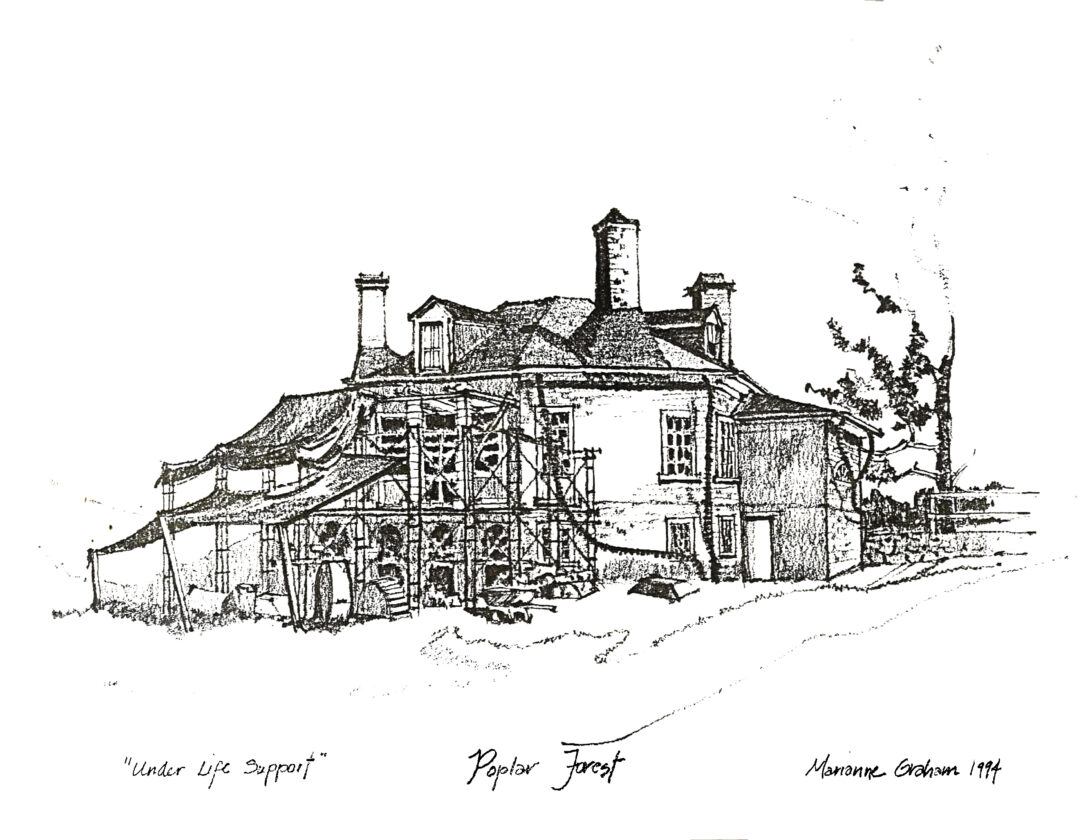Restoration Blog
The House is Restored…Now what?
“I never thought I’d live long enough to see it finished,” a sentiment shared by long-time docents, board members, and supporters of the 40-year experiment to faithfully restore Poplar Forest. Here we are at the most anticipated milestone in the history of this home, and the number one question we receive is: “What now?” It’s a good question, especially considering a project of this scale and duration.
From the outset, the requirement for restoring Poplar Forest was to do it right. Beyond that, it had to be done exceptionally well. But why? Couldn’t we just use metal lathe in places where we weren’t showing the exposed layers of plaster? Would anyone notice if all the interior woodwork was milled on a shaper? Perhaps modern glass without the ripples would give itself away, but would anyone verify that we did, in fact, use wood shingles on the privies rather than concrete castings? What was the imperative that drove the authentic and conscientious reconstruction methods? The answer may vary for each hand on the saw or nose in a book. Yet, the collective mission was to restore Thomas Jefferson’s original vision for Poplar Forest by synthesizing the original 1800s architectural fabric with the new 2000s original architectural fabric.
The first restoration features are already nearly 30 years old and have seen their own repair needs. Until recently, the balance has been between restoration and preservation, with each completed project tipping the scales further toward the latter. After we added the official final piece of the restoration, the relationship toward the historic villa retreat shifted to preserving the new and the old original structure. The restoration department’s preservation philosophy is that we are doing the work and documentation for historians and preservationists 200 years down the road, who will be grateful that we preserved the new things long enough for them to become old.
This summer, the focus is to address several sections of the roof with significant paint peeling and wood rot. Rest assured that though the house is finished, the work is never done.
